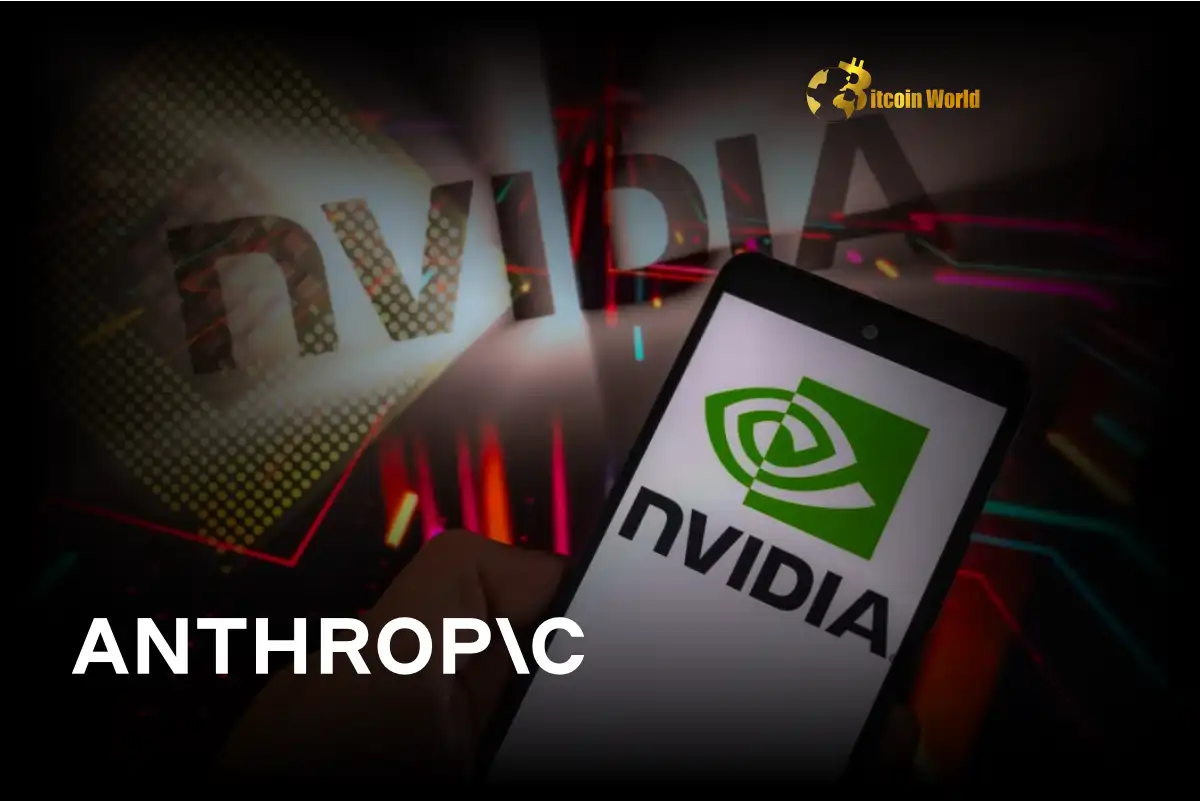Crucial Clash: Nvidia Takes Aim at Anthropic Over AI Chip Export Controls
0
0

In the fast-paced world where technology policy significantly impacts global markets, including sectors relevant to cryptocurrency and digital innovation, a notable dispute has emerged. Tech giant Nvidia is publicly challenging fellow AI leader Anthropic over its support for new US government restrictions on exporting advanced AI chips. This disagreement highlights the complex landscape of international trade policy and its direct consequences for leading technology firms.
Why Are AI Chips at the Center of This Dispute?
Advanced AI chips, particularly those used for training large language models and complex AI systems, are considered critical technology. The US government, through the Department of Commerce, is implementing what it calls the “Framework for Artificial Intelligence Diffusion.” This framework, set to impose sweeping restrictions starting May 15th, aims to control the diffusion of advanced AI technology to certain countries, notably China.
Here’s a quick breakdown of the core positions:
- Anthropic’s Stance: Anthropic has voiced support for these export controls. They argue that strict controls are necessary to prevent sensitive AI technology from falling into potentially adversarial hands. Interestingly, Anthropic representatives reportedly used vivid, albeit unusual, examples like chips being smuggled in “baby bumps” or “alongside live lobsters” to emphasize the perceived need for stringent measures.
- Nvidia’s Stance: Nvidia, a primary producer of these high-end AI chips, strongly disagrees with Anthropic’s position and the upcoming controls. A spokesperson for Nvidia told CNBC, “American firms should focus on innovation and rise to the challenge, rather than tell tall tales that large, heavy, and sensitive electronics are somehow smuggled in ‘baby bumps’ or ‘alongside live lobsters.’” Nvidia believes the focus should be on out-innovating competitors rather than relying on restrictive policies.
The Impact of Export Controls on Companies Like Nvidia
For a company with a significant global footprint like Nvidia, export restrictions have a direct and substantial financial impact. The company has openly stated that a new licensing requirement specifically for its H20 AI chips intended for sale in China could cost them an estimated $5.5 billion in the first quarter of their 2026 fiscal year alone. This figure underscores the importance of the Chinese market for Nvidia’s revenue streams and highlights the financial stakes involved in these policy decisions.
The debate isn’t just about revenue; it’s also about market dynamics and the future of the US China tech rivalry. While the US government aims to slow down China’s AI progress, companies like Nvidia worry that being shut out of a major market could hinder their own ability to invest in R&D and maintain their technological edge in the long run. It’s a delicate balance between national security interests and commercial viability.
What Does Anthropic‘s Support Signify?
Anthropic‘s public support for stricter export controls suggests a belief that the potential risks associated with uncontrolled AI diffusion outweigh the economic considerations. As a company focused on AI safety and alignment, their position aligns with a perspective that prioritizes responsible development and control over widespread access, especially to potential strategic competitors.
This divergence in opinion between two major players in the AI space — one a hardware powerhouse (Nvidia) and the other a leading AI model developer (Anthropic) — illustrates the broader tension within the tech industry regarding the balance between open innovation, global markets, and national security concerns in the age of advanced AI.
Concluding Thoughts on the Nvidia vs. Anthropic Debate
The public disagreement between Nvidia and Anthropic over export controls on AI chips is more than just corporate squabbling; it’s a window into the high-stakes policy debates shaping the future of technology and international relations, particularly the dynamic US China tech landscape. As the May 15th deadline for the new restrictions approaches, the industry will be closely watching how these policies are implemented and what their long-term effects will be on innovation, market access, and the global race for AI dominance. This conflict underscores that even within the cutting-edge field of AI, fundamental disagreements exist on the best path forward.
To learn more about the latest AI market, generative AI, GPU, etc. trends, explore our article on key developments shaping AI, Models, etc. features, institutional adoption, etc..
0
0
 Manage all your crypto, NFT and DeFi from one place
Manage all your crypto, NFT and DeFi from one placeSecurely connect the portfolio you’re using to start.





